Origins
Founded in 1347 by Marie de St Pol, Countess of Pembroke, Pembroke College, Cambridge or the Hall of Valence Mary, as it was originally known, is the third oldest of all the colleges at the University of Cambridge and the first to have its own Chapel.
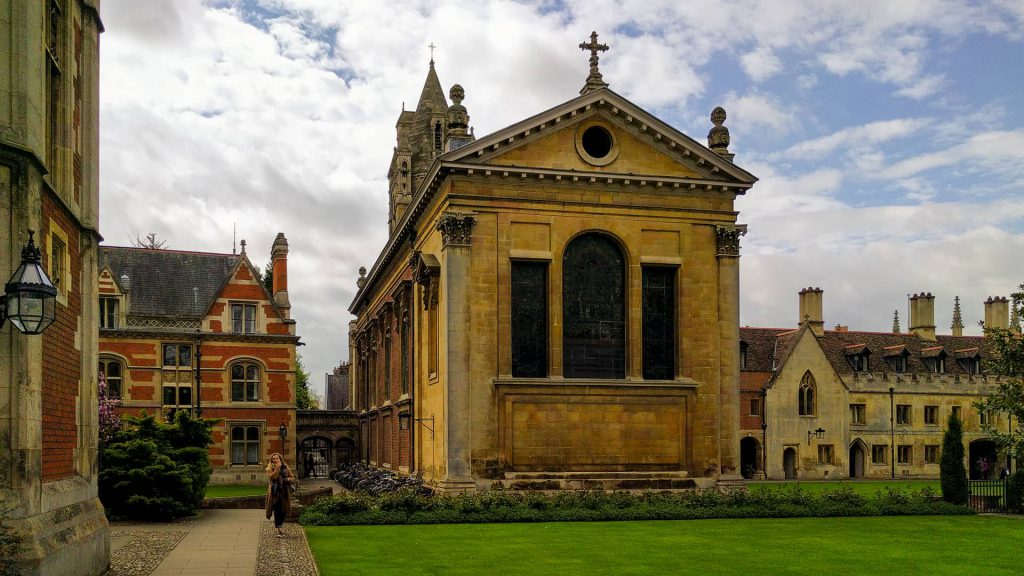
Prior to construction, Widow of Aymer de Valence, Earl of Pembroke, Marie de St Pol appealed to Edward III for a licence for the foundation of Pembroke College––an appeal that was later granted. And, resultantly, this foundation remains to this day. In fact, Pembroke College is the earliest Cambridge College to survive on its original site.
Location
Situated in the heart of the city of Cambridge, Pembroke College features a serene environment for the graduate and undergraduate student body alike. The tranquil setting is dotted with various examples of architectural styles from throughout history––all of which accentuate the beautiful open courts and lush gardens.
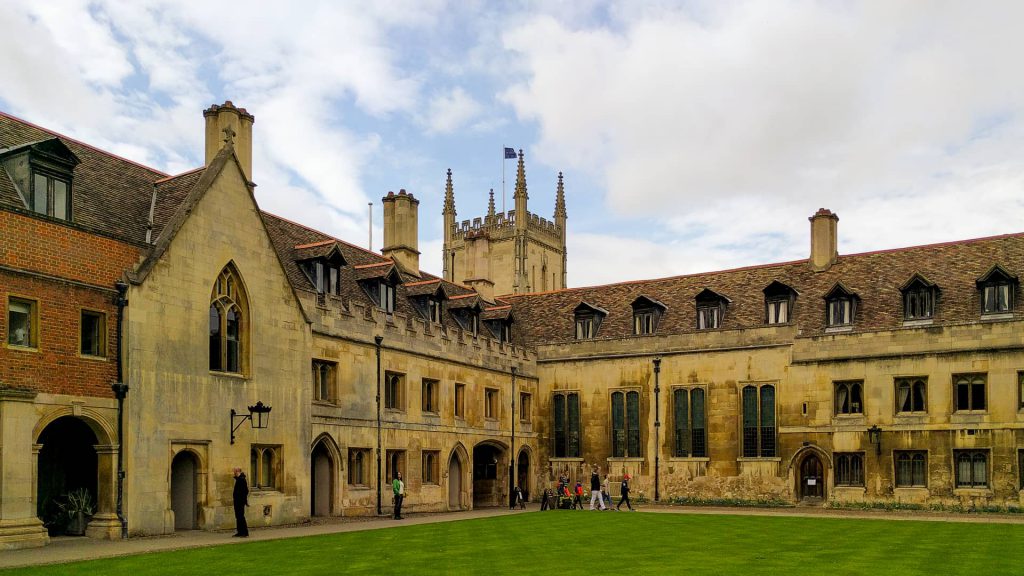
Pembroke College sits minutes from the River Cam, nestled within the boundaries of Trumpington Street to the west and the aptly named Pembroke Street to the north. Downing College resides perpendicular to Pembroke, and the two Cambridge colleges share many of the neighbouring facilities.
Grounds and gardens
Given its storied history, Pembroke College, known by students, staff and visitors for its strong community atmosphere and beautiful gardens, remains one of the prized jewels within the crown of the University of Cambridge.
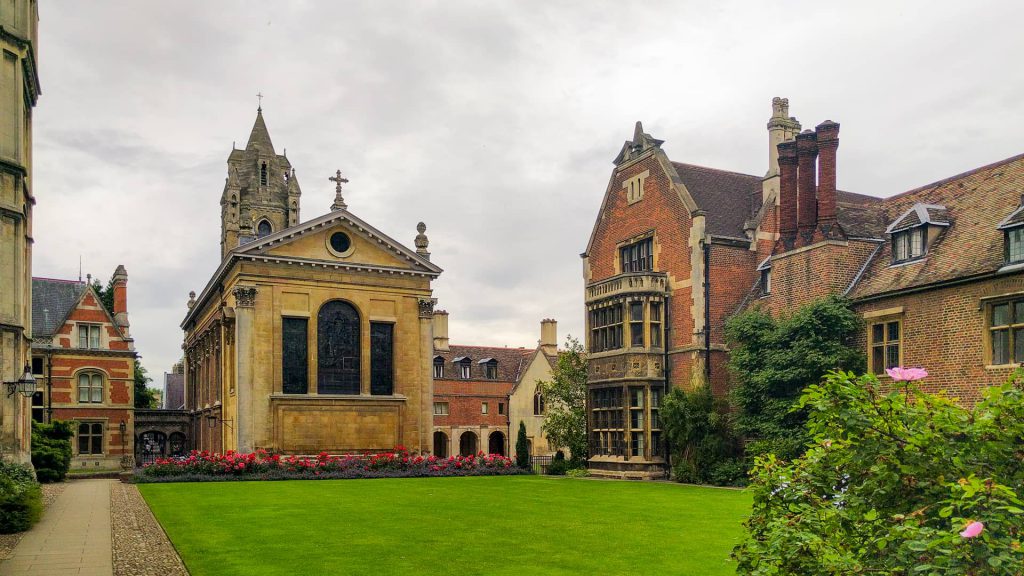
The original buildings––the Chapel, Hall, Master’s Lodge, students’ rooms, and the kitchen and buttery––comprised a single court (now called Old Court). And despite centuries of change and redesign, many of these sites exist, in one form or another, to this day.
By 1614, additional construction work began on the area north of Old Court––and thus, Ivy Court was born. More than one-third of the buildings on the Pembroke Street side of Ivy Court were completed just two years later; and, following a generous bequeathment from Sir Robert Hitcham, the south range of Ivy Court–– still known as Hitcham Building––was erected.
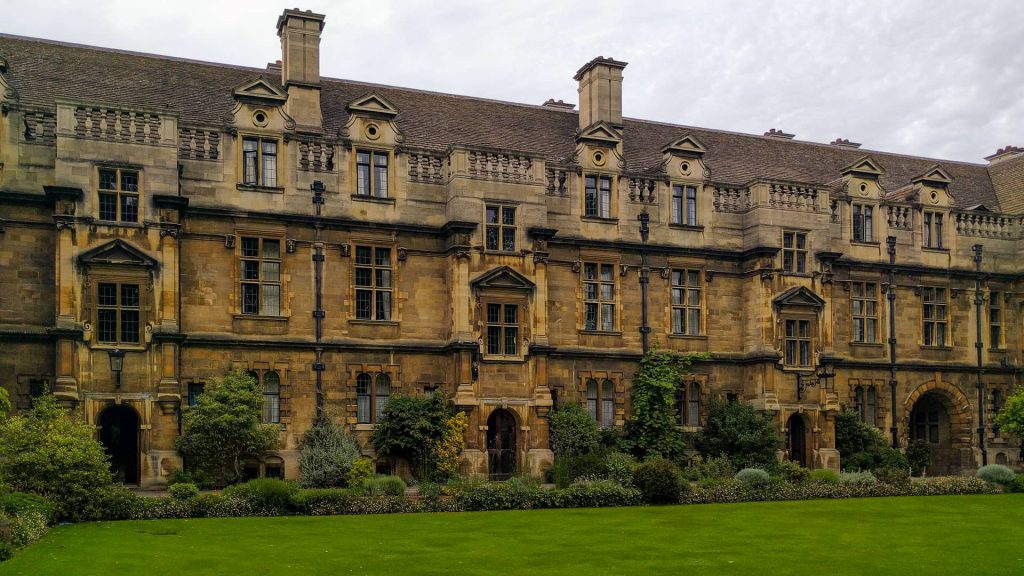
Little additional work took place until the 1870s, where cosmetic alterations were made to the Hall––before its eventual demolition and rebuilding, this time with an open timber roof––as well as the gradual addition of the Red Buildings, the now “Old Library”, and the construction of the New Court in 1881.
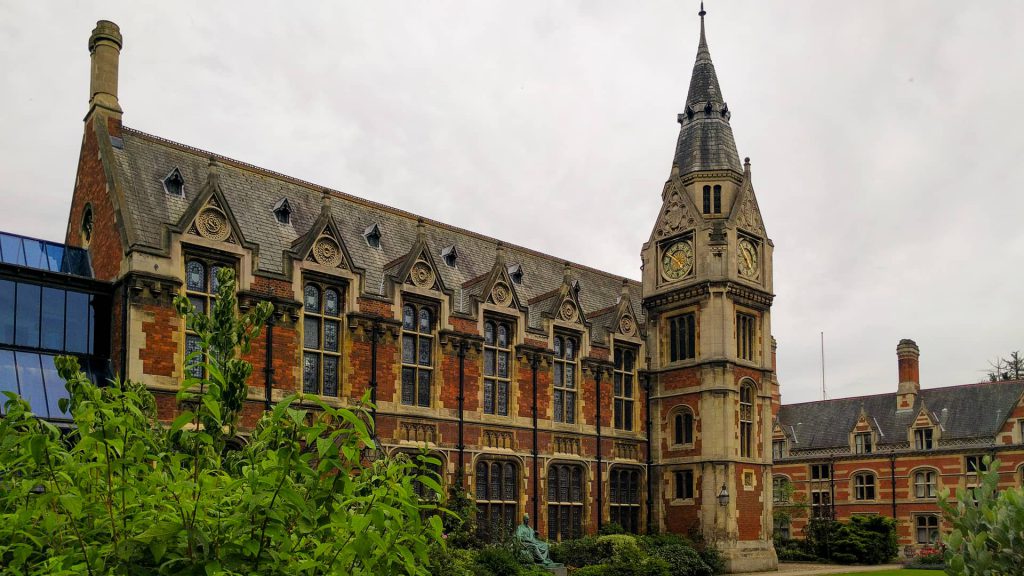
The Pitt Building, situated between Ivy Court and the then Master’s Lodge, was added in the earlier twentieth-century when increasing student numbers warranted further expansion. Another extension by architect W.D. Caroe provided a link between New Court and the Master’s Lodge in the form of an arched stone screen along Pembroke Street.
A new Master’s Lodge was built in 1933; the Orchard Building, overseeing the Foundress’s orchard, was erected in 1957; and Foundress Court was finished in 1997. Pembroke has, perhaps, seen more architectural change over the past 700 years than any other University site.
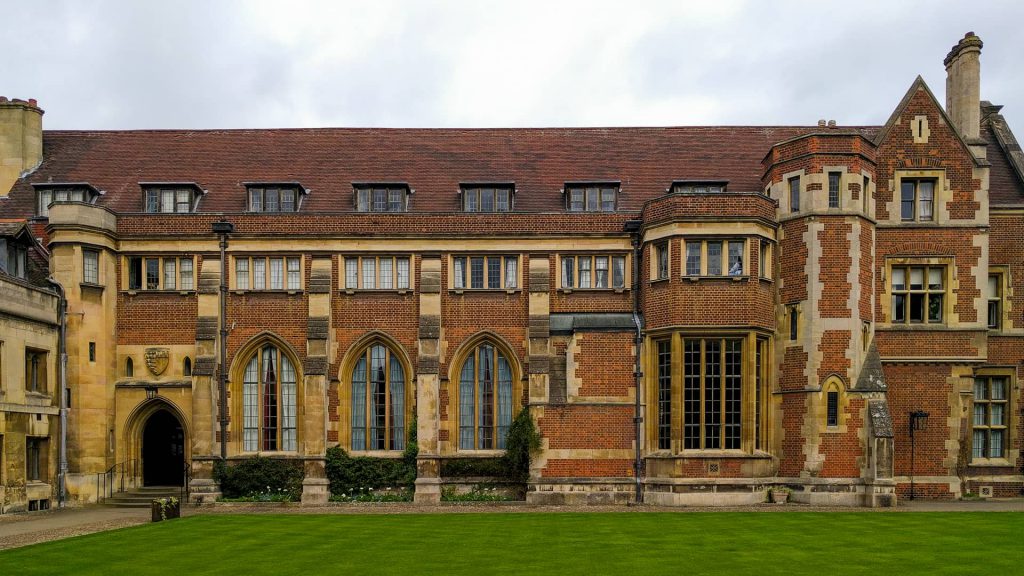
The Chapel
The famed Chapel of Pembroke College owes its existence to the Bishop of Ely, Matthew Wren, whose imprisonment in the Tower of London during the Civil War resulted in a great personal period of reflection.
Wren vowed that, if he were released, he would build a new chapel of worship for his College. And he did, enlisting the help of his architect nephew, one Sir Christopher Wren––and the Chapel of Pembroke College, consecrated on St. Matthew’s Day in 1665, became the first chapel in the University of Cambridge and the University of Oxford in the classical style.
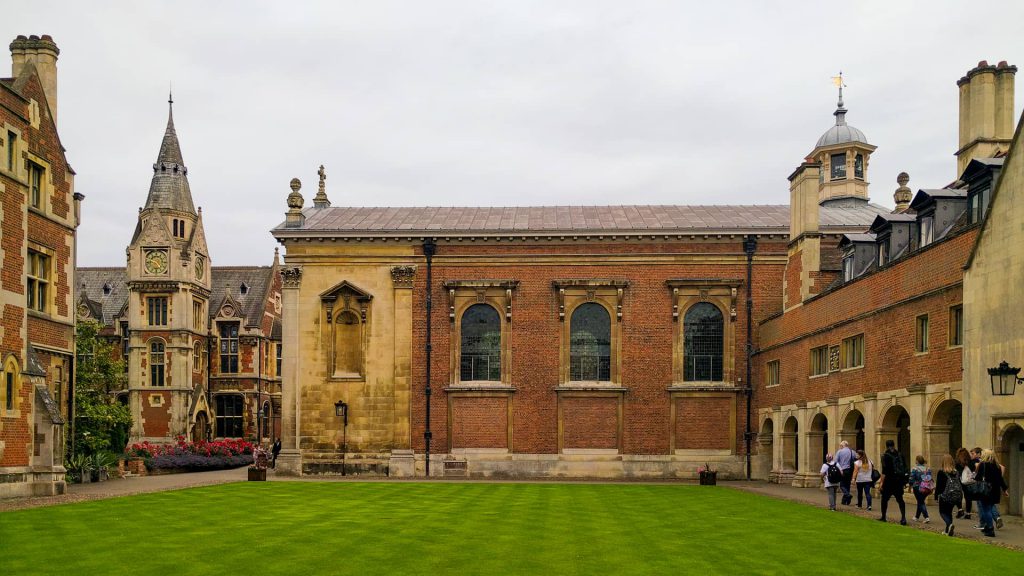
Sir Christopher Wren was also responsible the Wren Library at Trinity College and the Chapel at Emmanuel College.
Soon after an east-end extension was completed by George Gilbert Scott, Jr. in 1881, the Chapel, with its striking seventeenth-century plaster ceiling and expansive windows, was converted into a library (known by College members, staff and students today as the Old Library).
The Library
Housed in a beautiful Victorian building, Pembroke’s academic Library sits at the centre of the College and features over 42,000 books and tranquil study and research rooms for all members of the College. The Library is run by a dedicated team of professional librarians and provides books for all subjects taught in Pembroke.
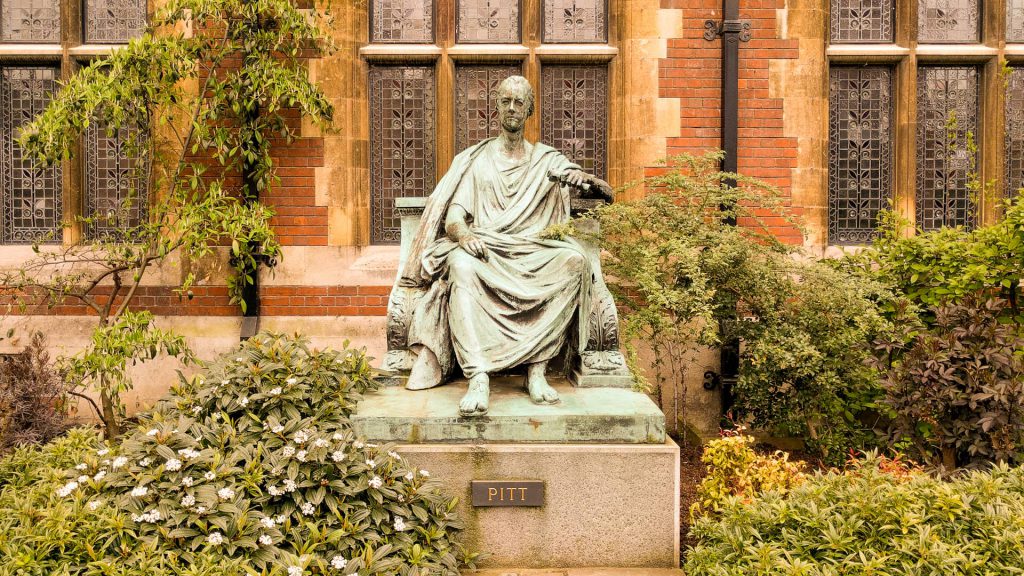
Student life
One prominent feature of student life at Pembroke College is the popular dramatic society, the Pembroke Players, which has birthed the careers of countless well-known alumni, including Eric Idle, Clive James and Peter Cook.
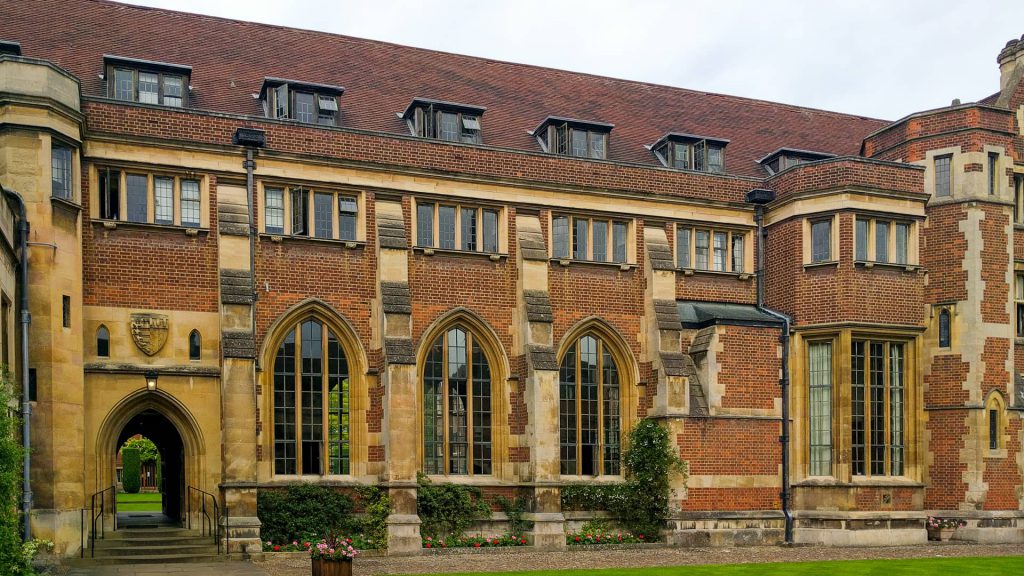
Pembroke is the only Cambridge college to feature an International Programmes Department, which allows international students to spend a semester in Cambridge.
An interesting bit of trivia related to student life at the College is to do with the College stairways. It’s traditional for the staircases at Cambridge Colleges to be designated letters, rather than numbers. Those at Pembroke are not different, except for the fact that they use letters of the Welsh alphabet, so look out for staircase LL and so on.
Sport
For active students, Pembroke College has its own gym facilities and sports grounds a quick cycle ride from the main College. These grounds feature grass pitches for football, rugby and cricket, as well as courts for basketball, volleyball and tennis.
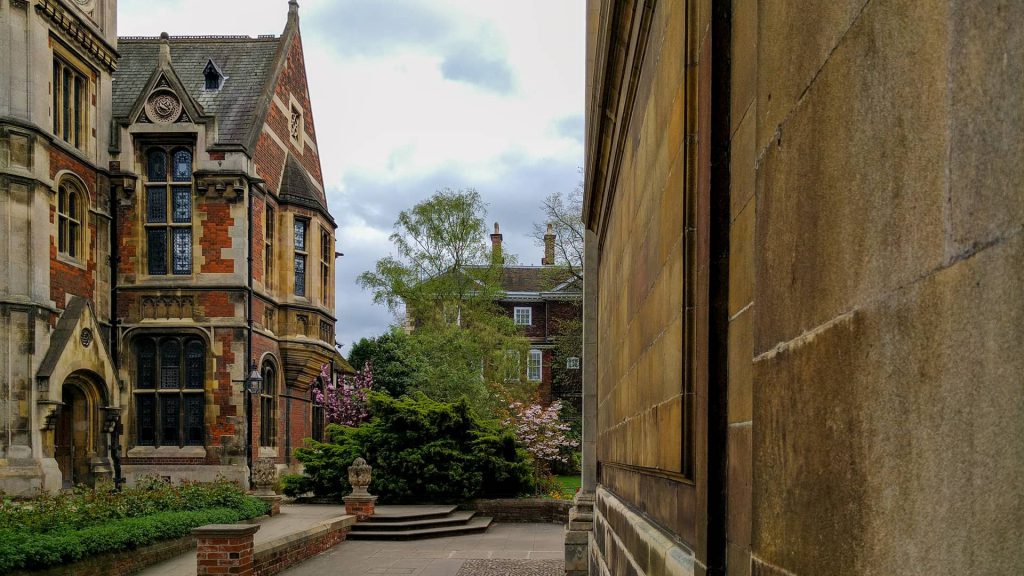
However, while there are many events and athletics clubs organised by the student body of Pembroke, perhaps most popular is the Pembroke College Boat Club. Established in 1827, the Boat Club is one of the top sports societies at Pembroke, having won numerous accolades and awards during the Lents and Mays Bumps.
Music
Pembroke College offers many opportunities for those students interested in participating in a wide variety of musical programs and activities. Alongside Pembroke’s five Choirs, there is also a College orchestra, as well as recitals organised by the Pembroke College Music Society.
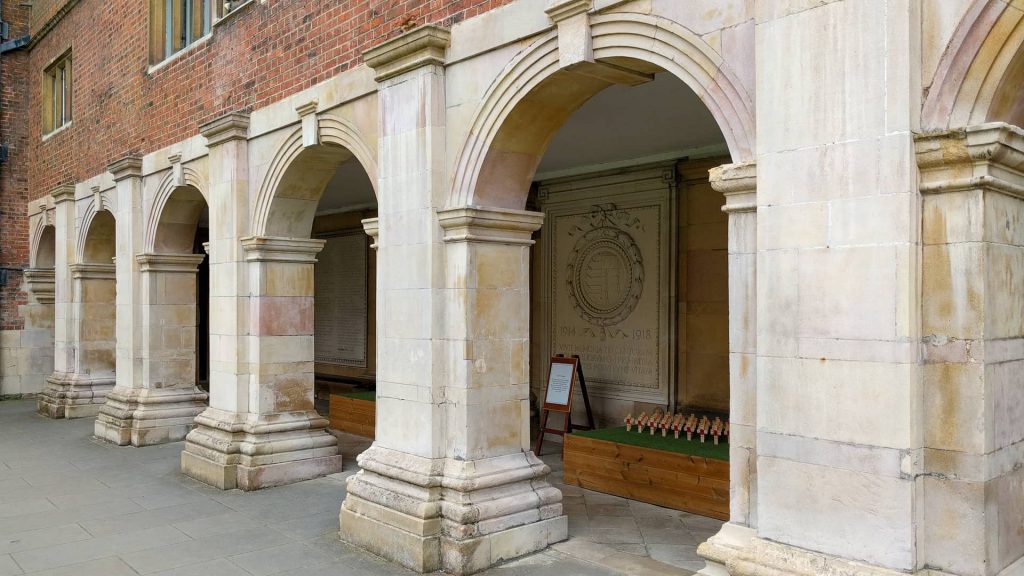
Alumni
Notable alumni of Pembroke College include a list of people from history––British scholars, academics and luminaries from such varied and illustrious fields as medicine, science, arts and literature, and world politics. Some of the more recognisable names include:
· Edmund Spenser (poet; author of The Faerie Queene)
· The Right Honourable William Pitt (former UK Prime Minister)
· Naomie Harris, OBE (Academy Award-nominated actor)
· Tom Hiddleston (Olivier Award-winning actor)
· Peter Cook (satirist; actor)
· Ted Hughes, OBE (poet, writer)
· Richard Beard (writer; memoirist)
· Clive James, CBE (journalist; broadcaster)
· Eric Idle (writer, Monty Python comedian)
· Rodney Robert Porter, CH (biochemist; 1972 Nobel laureate)
· William Fowler (nuclear physicist; 1983 Nobel laureate)
· The Right Honourable Peter Murray Taylor, Lord Taylor of Gosforth (former Lord Chief Justice of England), unrelated to Murray Edwards College.
· Peter Taylor, OBE (journalist; documentary maker)
· Richard Murdoch (actor)
· Humphrey Jennings (history documentarian; filmmaker)
· Peter Bradshaw (journalist; film critic)
· Tim Brooke-Taylor, OBE (actor; comedian)
· Sir John Edward Sulston, CH (biologist; 2002 Nobel laureate)
Contact Point––Pembroke College, Cambridge
Pembroke College, The University of Cambridge
Cambridge, CB2 1RF
Sister College
Pembroke’s sister college is The Queen’s College, Oxford, founded in 1341 by Robert de Eglesfield